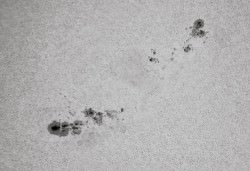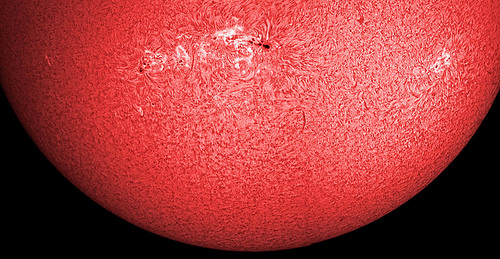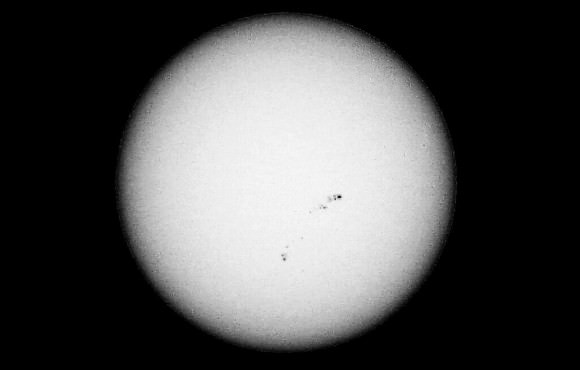Do you feel like you’re in the firing gallery? These sunspots are practically square-on to Earth right now. Although they haven’t shown much sign of erupting, if they did our planet would be right in the line of fire if a flare or stream of solar particles erupted.
These groups (known as 1785 and 1787) are so big that they are easily visible in amateur telescopes. 1785 alone is more than 11 Earth-diameters across, according to SpaceWeather.com! Just make sure you have the proper solar filters in place before you gaze at these dark smudges.

“Sunspots” — so called because they appear as dark smudges on the face of the sun — are areas of intense magnetic activity on the sun (thousands of times stronger than that of Earth’s magnetic field.)
At times, these regions can get so intense that the energy builds up and releases in the form of a flare and/or a coronal mass ejection — a burst of gas and magnetism that hurls solar material away from the sun.
If these flares hit the area of the Earth, a bunch of things can happen. Particles can flow along Earth’s magnetic lines and lead to the creation of aurora, or Northern/Southern lights. (Here’s an aurora that happened in June.) More severe storms can short out satellites or disable power lines.
“Could it be the calm before the storm?” SpaceWeather.com asked on its homepage, before giving forecasts of strong types of flares: “NOAA forecasters estimate a 55% chance of M-flares and a 10% chance of X-flares on July 8.”
The question has more pertinence given that 2013 is supposed to be the peak of the current 11-year sunspot cycle, but so far it’s been quieter than astronomers expected. Scientists are still trying to figure out how the cycle works.
We’ll keep our eyes peeled and let you know if something interesting happens. In the meantime, these pictures came from Universe Today readers, and we’d love to see your images, too! Feel free to add your snapshots to our Flickr page.
Update, 2:39 EDT: Among the pictures in our Flickr pool is this new stunner below from Ron Cottrell of Oro Valley, Arizona. “These sunspots are so magnificent that I get striking detail with my small 40mm Hydrogen-alpha telescope,” he wrote us.

Update, 2:50 p.m. EDT: On Twitter, Daniel Fischer pointed out that the sunspot group is even visible using a simple camera and eclipse glasses.


